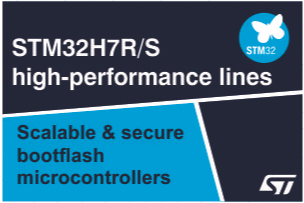There were over two million electric cars on the world’s roads in 2016 according to information from the International Energy Agency. The number of electrically powered vehicles will rise significantly in the coming years. The Chinese market alone is showing high growth. In 2017, 777,000 electric vehicles were sold in China (new energy vehicles, including fuel cell, commercial vehicles, buses). This means an increase of 53 percent compared to the previous year, as the Center of Automotive Management announced in Bergisch Gladbach. From 2019, a minimum quota of 10 percent will also be introduced for electric vehicles in China. In Germany, market share doubled from 0.8 to 1.6 percent during the past year. The reasons for this include ambitious climate targets and the current debate about driving bans for diesel vehicles.
Electromobility therefore has a strong future. The specialty chemicals company LANXESS is prepared for this. It has a wide range of high-performance plastics for use in electric vehicles. These light materials play an important role in the weight of the vehicles. If electric vehicles are lighter, this means they have a greater range. The engine then needs to transport a lighter weight, less energy is required, and the battery is preserved.
DRIVING FURTHER WITH LIGHTWEIGHT MATERIALS
T“Our material developments focus particularly on applications for the electrification of the powertrain for manual and self-driving vehicles and on establishing the necessary infrastructures and logistics. An additional focus area is new lightweight materials and technologies, which help to increase the range of electric vehicles,” explains Jan Bender, Head of Marketing EMEA for the High Performance Materials (HPM) business unit at LANXESS.
Potential applications for thermoplastics from LANXESS, some of which are already established in mass production, involve components for charging systems, holders, and cell holders for battery systems in hybrid and pure electric vehicles. The materials also have great potential in the e-mobility infrastructure, such as for housing parts, circuit breakers, or terminals for charging stations. In the case of autonomous driving, the polyamides and polyester are suitable for connectors from sensors, displays, and control units, for example. “Our highly filled polyamides and composites can also work well in the lightweight design of seat backrests and shells for new seating concepts,” says Bender.
NEW MATERIAL FOR BATTERY COMPONENTS
In cooperation with HELLA KGaA Hueck & Co., Lippstadt, LANXESS developed the new compound material Pocan AF4130. It serves as a housing material for a battery management unit (BMU) and two cell monitoring units (CMU). A BMU controls the CMUs, the high-voltage current sensor, and the isolation monitoring unit in the battery of electric and hybrid vehicles. Each cell monitoring unit is allocated to a module composed of a certain number of cells. The CMUs measure the voltage, current, and temperature in the individual cells, and compensate for voltage differences between the cells of a module.
The developed blend of PBT (polybutylene terephthalate) and ASA (acrylonitrile-styrene-acrylon
HIGH RESISTANCE
PBT has good electrical properties, is resistant to chemicals, and is thermally stable. It has already been used successfully in various electrical and electronic components for cars, including sensors, connectors, and actuator casings. However, special material developments are often required to meet the high specific requirements for battery components.
MATERIALS FOR NEW COMMUNICATION SYSTEMS
Another area of focus for material development at LANXESS is components for new communications systems in heavy traffic, which enables communication between vehicles, between vehicle and infrastructure, and remote diagnostics of the vehicle condition. Bender: “Here, we are thinking about components for adaptive cruise control or radar systems for collision avoidance, for example. Logistics concepts for urban transportation of goods using drones or self-driving electric vehicles are another interesting area of application for our materials.”
Battery Components for “Green Two-Wheel Options”
LANXESS has solutions for more than just electric vehicles. One interesting example is the new material Pocan AF 4110, which the Italian company Askoll uses for the battery casing in its electric scooters and e-bikes. The flame-retardant material is designed for complex, large casing parts in electrical and electronic applications, and has a very low warping tendency. It is also extremely flame-retardant. “The new material is part of our comprehensive product range for electric vehicles. We see excellent growth prospects for our Pocan polyester and Durethan polyamides in this field, and we will continue to expand the range in close collaboration with our e-mobility development partners,” explains Jan Bender.
BATTERY COMPONENTS FOR “GREEN TWO-WHEEL OPTIONS”
LANXESS has solutions for more than just electric vehicles. One interesting example is the new material Pocan AF 4110, which the Italian company Askoll uses for the battery casing in its electric scooters and e-bikes. The flame-retardant material is designed for complex, large casing parts in electrical and electronic applications, and has a very low warping tendency. It is also extremely flame-retardant. “The new material is part of our comprehensive product range for electric vehicles. We see excellent growth prospects for our Pocan polyester and Durethan polyamides in this field, and we will continue to expand the range in close collaboration with our e-mobility development partners,” explains Jan Bender.






